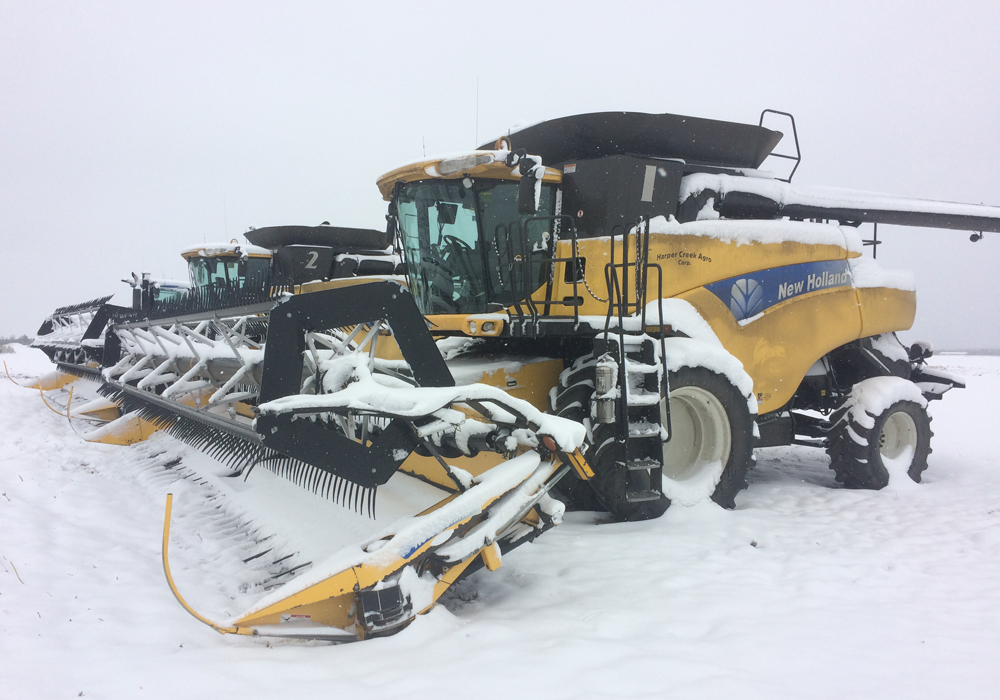This year’s challenged harvest is expected to increase interest in using the measurement to determine value of the crop
With significant amounts of weather-damaged wheat filling grain bins across the West this year, farmers will be looking for any advantage they can find when it comes time to market this year’s crop.
That means getting an accurate assessment of grade and falling number will be more important than ever in determining the crop’s value.
Daryl Beswitherick, program manager with the Canadian Grain Commission, said farmers are still harvesting this year’s crop so wheat samples submitted to the commission’s harvest sample program have been slow to arrive.
Read Also

More factors affecting winter weather
When you combine a weak La Niña, early Siberian snow, and a warm northern Pacific, it’s easy to see why long-range winter forecasting is so complex.
The program allows farmers to get an official grade determination and falling number analysis on wheat samples submitted before Nov. 30.
As of late last week, about 1,200 CWRS wheat samples had been analyzed, including 630 from Manitoba, 355 from Saskatchewan and 216 from Alberta.
Last year, the commission received more than 5,000 CWRS samples from across the West.
Of the CWRS samples tested this year, nearly 90 percent were in the top two grades, with average protein levels around 14 percent.
But that result is probably not indicative of the overall quality of this year’s wheat crop.
“I think we’re still seeing the effects of the early harvested crop because it’s still grading 64 percent No. 1 and 25 percent No.2,” said Beswitherick.
“Unfortunately, we don’t anticipate that’s going to be anywhere close to the average … when it’s all off.”
In an Oct. 3 interview, Beswitherick said sprouting and mildew are becoming more common as wheat samples continue to flow in.
Fusarium damage is also evident on a small number of samples.
“As the crop goes, we are definitely seeing more samples being downgraded on account of sprouting and mildew …,” he said.
“I don’t think it’s really surprising to see it, and as the harvest goes on, we’re going to see more of that. How low and how poor it gets, I guess time will tell.”
It’s hard to say whether the lateness of this year’s harvest will result in fewer wheat samples being submitted by growers, he added.
If harvest quality gets too bad, growers may not bother with samples.
“Feed wheat is feed wheat,” Beswitherick said.
“But I also think there will be a lot of cases where producers will want to know exactly what that falling number is and that could also increase the number of samples (we receive).”
Two years ago, the CGC expanded the harvest sample program to include assessments of falling number and fusarium damage in wheat.
Falling number is not an official grading factor but it is used in some commercial contracts to determine the value of milling wheat.
For example, a contract might stipulate that CWRS wheat must fall into the top two grades and must have a minimum falling number of 300 seconds or more. Deliveries that don’t meet those contract specs are subject to a discount.
Of the 1,200 CWRS samples tested so far, about 70 percent had a falling number of 360 seconds or greater, said Bin Xiao Fu, a bread and durum wheat research scientist at the CGC’s grain research laboratory in Winnipeg.
A falling number of 300 or more is typically considered good, with little or no impact on end-use functionality.
Fu said the relationship between sprouting and falling number is complex.
In general, wheat samples that show a high degree of sprout damage can be assumed to have a lower falling number.
But the correlation is not directly proportional.
For example, a sample that shows sprout damage on 50 percent of kernels cannot be assumed to have a falling number that is twice as high as a sample that shows sprout damage on 100 percent of kernels.
Similarly, falling number cannot be adjusted by blending.
In other words, blending a tonne of wheat with a falling number of 200 and a tonne of wheat with a falling number of 300 does not produce a two-tonne cargo with a falling number of 250.
Canada’s current grain grading system uses visual sprouting assessments as a proxy for determining falling number.
A visual assessment of sprout damage allows for a quick estimate of end-use quality but the only way to get an actual determination of falling number is to have the grain tested by a lab.
Results of a falling number test are determined based on the presence of alpha-amylase, an enzyme found in sprout-damaged wheat.
If germination occurs, there is a dramatic increase of alpha-amylase, which results in a lower falling number.
Generally speaking, visual grading works well in relating sprout damage to wheat functionality, said Fu.
“Due to the enzymatic nature, however, the percentage of sprout kernels present is not necessarily proportional to the alpha-amylase activity and the degree of damage to the functionality due to sprouting,” he added.
Wade Sobkowich, executive director of the Western Grain Elevator Association, said variability in the quality of this year’s wheat crop will create some unique challenges for grain companies that are “trying to meet customer specs for falling number on the export side.”
















